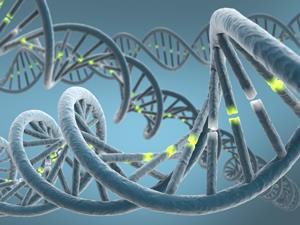The challenges posed by asymmetry go hand in hand with fascinating insights into developmental biology

Chirality frustrates and fascinates chemists in equal measures. Most natural products are chiral, and their physiological or pharmacological properties often depend on biological receptors recognising the correct enantiomer. Approximately half of drugs have active chiral ingredients. At best, non-pharmacologically active enantiomers are benign, but in some cases they can be toxic. Single-enantiomer drugs are therefore safer. This explains why rarely a month at Chemistry World goes by where we don’t report on a new enantioselective reaction. Furthermore, some scientists see life’s homochirality – the propensity of biological molecules’ to exist in just one form – as an encrypted chemical clue that could answer profound questions about the chemical origins of life.
Life also has curious asymmetries on the macroscopic scale. Although vertebrates are essentially symmetrical on the outside, on the inside, they have numerous asymmetries especially concerning organ structure and placement. Snail shells and climbing plant tendrils are easy-to-recognise examples of biological asymmetry.
But is molecular chirality linked to macroscopic asymmetry? Research we covered back in November says it can be, and evidence is offered of a link between a single gene and asymmetries on the molecular, cellular and macroscopic levels. Attempting to identify whether other genes give rise to similar effects will help scientists ascertain if – or how – unique this situation is.
Let’s not see chirality only as a challenge to control, but also a source of answers to some of science’s biggest enigmas
As is typical with new discoveries, identifying a link between nano and macro asymmetry raises questions over how chiral information in a molecule is translated into chirality you can see with the naked eye. What molecular events give rise to this process? I for one am certainly eager to learn more about chemistry’s role in biological symmetry-breaking.
Better understanding of molecular level influences over the left–right axis in animals could have benefits for certain genetic syndromes and birth defects, as well as answering questions about developmental biology. Let’s not see chirality only as a challenge to control, but also a source of answers to some of science’s biggest enigmas.












No comments yet